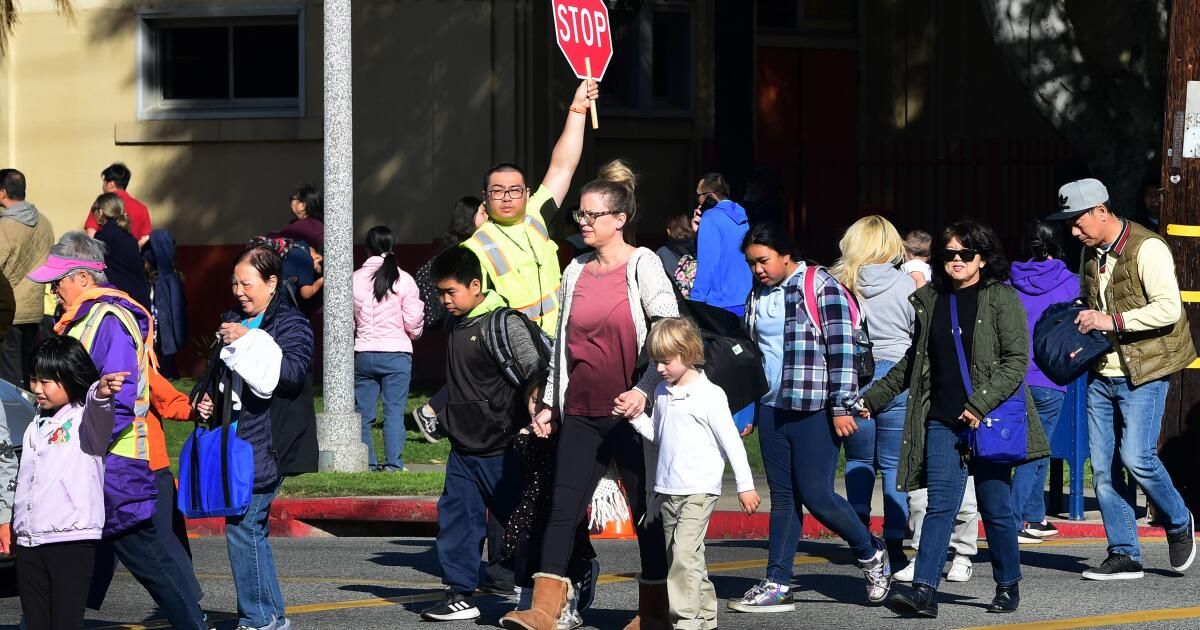As kids head back to school this week in Los Angeles, it's hard not to think about some of the tragedies that have occurred in our schools and how we might prevent the next ones.
In April, shortly before 8 in the morning, a van ran over a mother and a 6-year-old girl in the crosswalk in front of Hancock Park Elementary School in the Mid-Wilshire area, killing the woman and injuring the child.
The next day, a 14-year-old student was run over as he walks toward Berendo High School near downtown Los Angeles
In March 2020, Abraham Trejos, 13 years old. I was waiting to cross the street to go to school in South Los Angeles. When the light turned green, she started to cross. At that same moment, a 43-year-old woman turned left and struck Abraham; He died at the scene.
As an activist dedicated to preventing road violence and other harms caused by our car-dominated culture, I know that tragedies like these are sadly familiar and completely avoidable.
The Los Angeles Department of Transportation has a chronic staff shortage that Long-planned safety improvements for Hancock Park Elementary School, including a widening of the sidewalk, have not yet been completed despite having been planned for more than a year. It is possible that these updates could have changed the outcome that day in April and no lives would have been destroyed.
As a city, we need to do some soul-searching. How much is it worth to provide maximum comfort to drivers if we measure the cost in the lives of children? What kind of compromises are we willing to continue making to have the “freedom” that cars provide? What are we willing to do to ensure that preventable deaths are never repeated again?
In the late 1980s, Italy began experimenting with completely blocking cars from entering streets next to schools during school hours. In 2012, the UK started doing the same and Paris schools joined in 2019. The UK now has over 700 such schools. “school streets”, France 215, Belgium 170, Spain 150. In the United States, which is about the same size as the entire European Union, we have a total of 110.
In Los Angeles, almost all schools are optimized for parents to drop off and pick up children in cars, with valet lines of cars snaking onto adjacent streets and parent volunteers in vests trying to keep the line moving. Our thinking has been to improve the convenience of transporting children by car, rather than protecting the children themselves. This city does not have a single car-free street in front of a school.
Car accidents are one of the main causes of death of children in Los Angeles, at a rate of 16 deaths per 100,000 children as of 2019. As adults choose to purchase larger and larger vehicles, this has increased. have a huge cost both for the safety of our children and for their freedom. Walking to school shouldn't be deadly.
How do we ensure that no child (or parent) is injured by a driver while heading back to school? While the City Council school-specific speed bump program and reducing speed limits around schools is a good start, but it is not enough: drivers do not change their habits based on signs, they change their habits based on changes in the built environment.
We should immediately put resources into banning cars on the streets where children enter and leave schools, at least during school hours and ideally permanently. Yes, that may mean that parents taking their children to school would need to take more time because they will have to drop them off further from the school or park somewhere and walk their children the rest of the way, but the safety benefits are worth it. the sorrow.
We should also make every street within a mile of a school a “slow street,” with built-in traffic calming infrastructure. This could help encourage some parents to leave cars out of their children's trips entirely, walking or cycling to school on streets that would be safer.
Children don't just show up at school; They have to get there. We should prioritize walking and cycling paths so they can do that. It would also be great to see a statewide effort to allow transportation funding for schools to include “bike buses”: parades of students led by adults who ride bikes to and from school. This was recently approved in Oregon.
There are always those who oppose things like adding bike lanes and street safety improvements because they don't want to give up driving or parking space. I would ask you this: What kind of city do you want to create for our children? Do you want them to have to use a car to get around all the time? Do you want them to breathe polluted air? Do you want to live in a city where a pedestrian dies once every three days?
It's not just up to city, county and state officials. Average residents can make a big difference for the better. The next time a road safety project is proposed, support it, even if it means your trip might take a couple of minutes longer. Our children's lives are worth it.
Michael Schneider is the founder of Streets for All.









